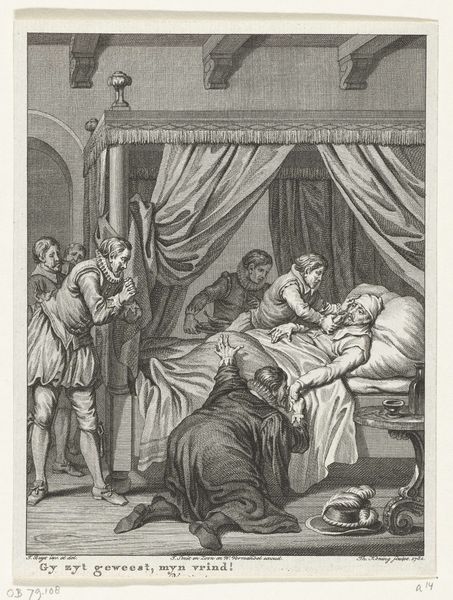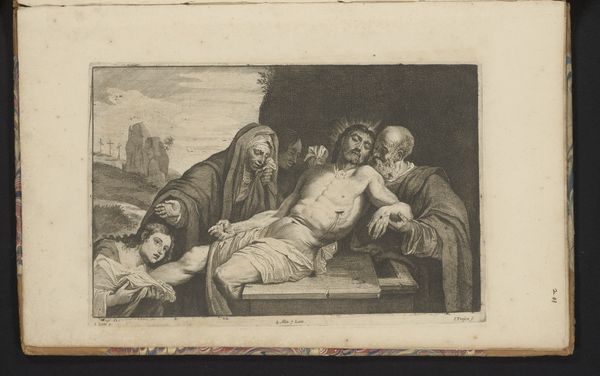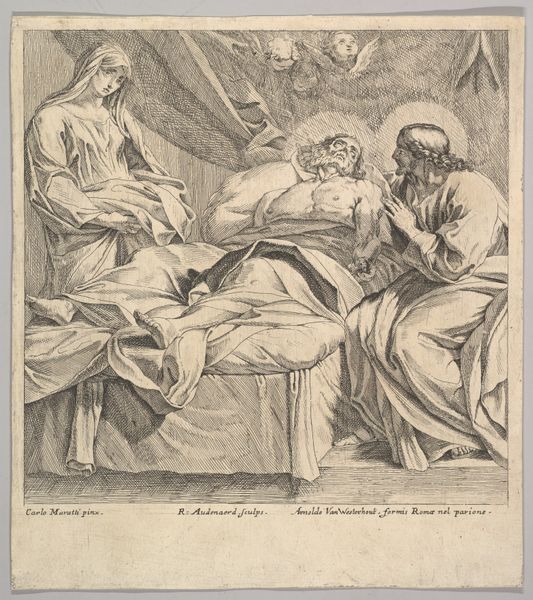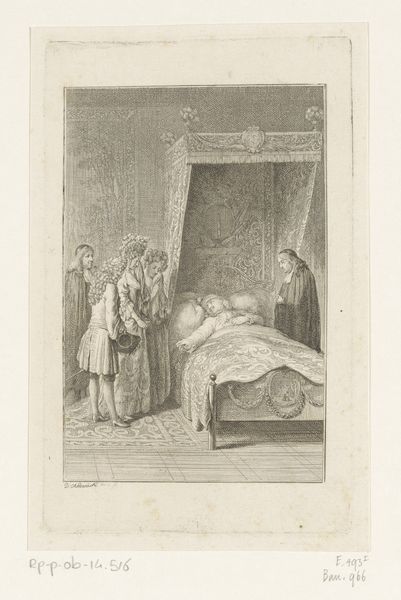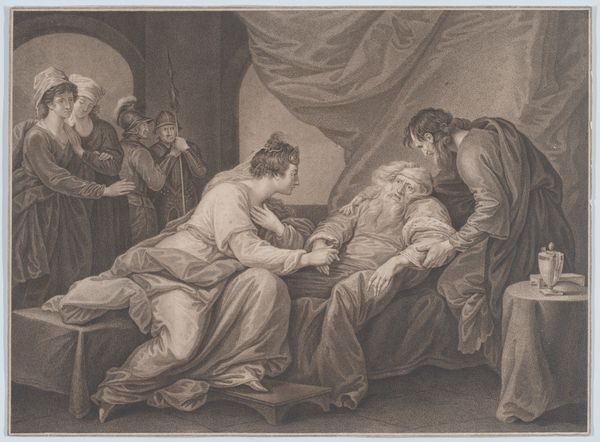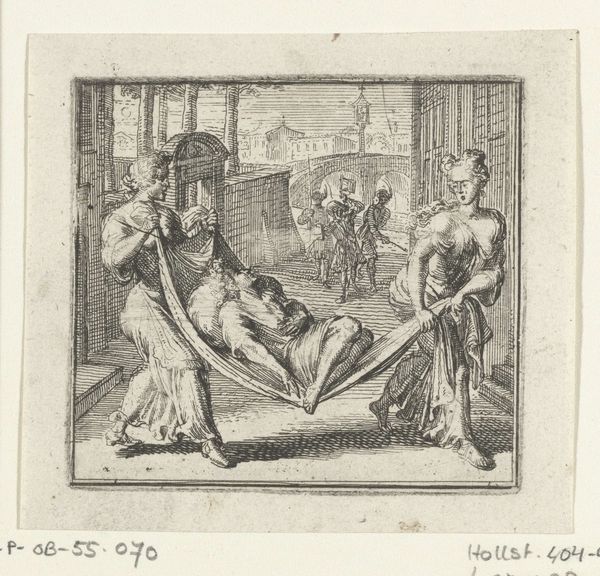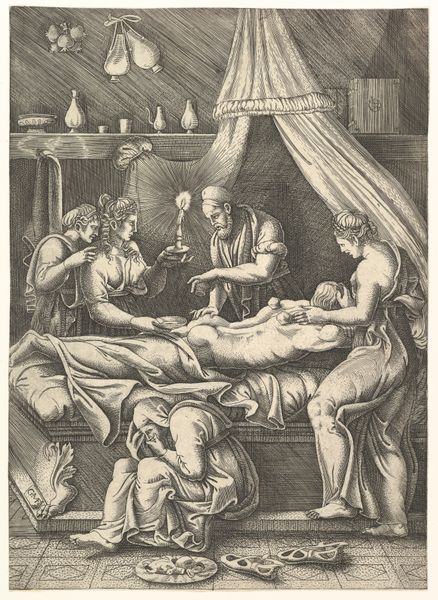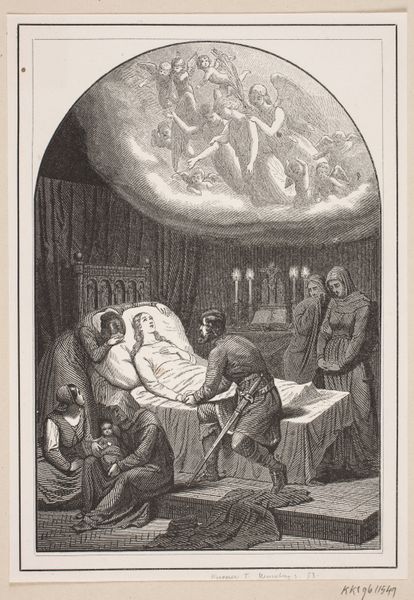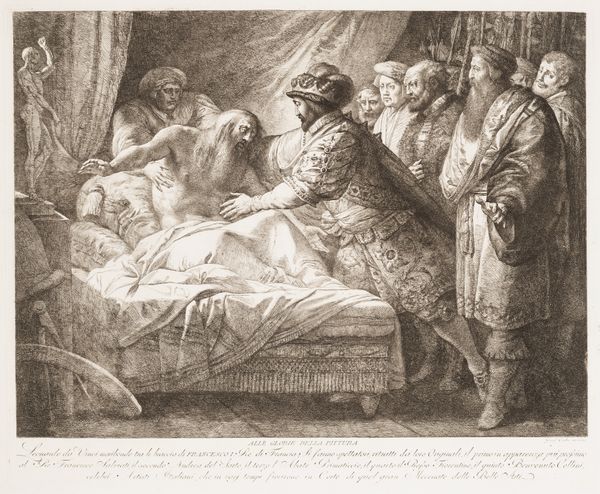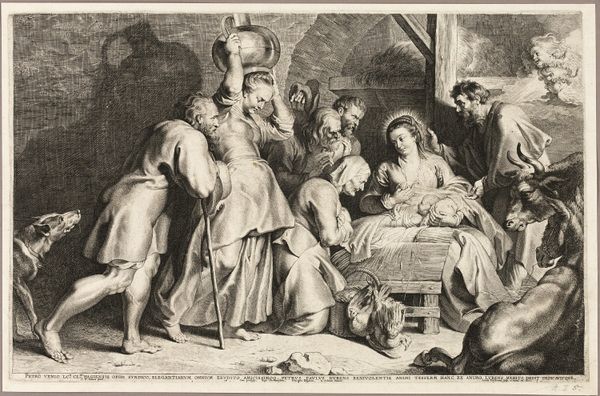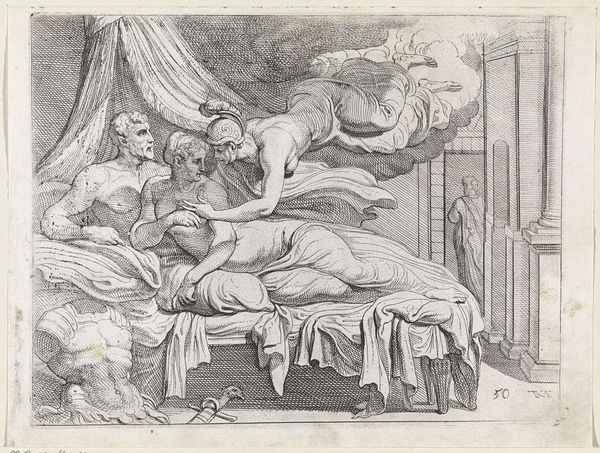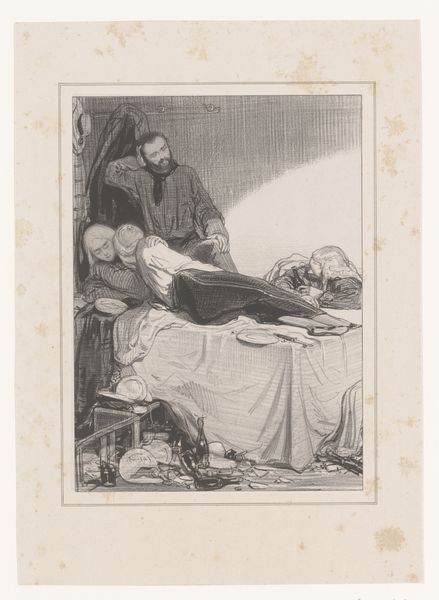
Dimensions: Sheet: 3 11/16 x 5 3/8 in. (9.3 x 13.7 cm) Image: 3 3/8 × 5 1/16 in. (8.5 × 12.9 cm)
Copyright: Public Domain
Curator: Jean-Honoré Fragonard created this engraving, "The Circumcision," sometime between 1759 and 1769. Editor: My first thought is how the composition guides you right to the child. There’s such emphasis and focused light there. It almost feels staged, a presentation. Curator: Absolutely, that focus isn't accidental. The scene carries heavy symbolic weight. Circumcision, biblically, represents the covenant between God and Abraham, a marker of belonging and divine promise. Editor: And you can see Fragonard's method through these lines. It feels more like hatching and cross-hatching than clean, deliberate engraving. I wonder about the printing process back then— the labor of producing multiple impressions of something like this. Was this for widespread circulation? Curator: Quite possibly. Prints democratized religious imagery, disseminating these ideas. Look at how Fragonard positions Mary—her downcast gaze symbolizes acceptance and sorrow, a foreshadowing of Christ's later suffering. The expressions around the scene vary, each figure contributing to this collective moment of solemn dedication. Editor: And thinking about the materials... paper, ink... how were these distributed? Who was consuming such imagery, and what did this process mean for accessibility to faith? Did prints cheapen or deepen their devotional importance? The texture here reminds me how tactile art used to be. Curator: It brings up intriguing questions, certainly. It also reflects a key theme of continuity – rituals that bridge generations, that reinforce shared belief systems through these very physical acts of representation. You see it manifested not only in iconography, but also within gestures, such as hands cradling sacred objects during this precise moment of dedication. Editor: This print gets at an intersection, for me, of material reality meeting spiritual ideation— a balance that often feels lopsided in artwork with heavy narrative burdens such as this. Thanks for shining some light on its nuances! Curator: Indeed; by connecting the immediate image to larger thematic and social questions we open it further up to interpretation, and I believe enhance our shared cultural memory around such pieces.
Comments
No comments
Be the first to comment and join the conversation on the ultimate creative platform.

